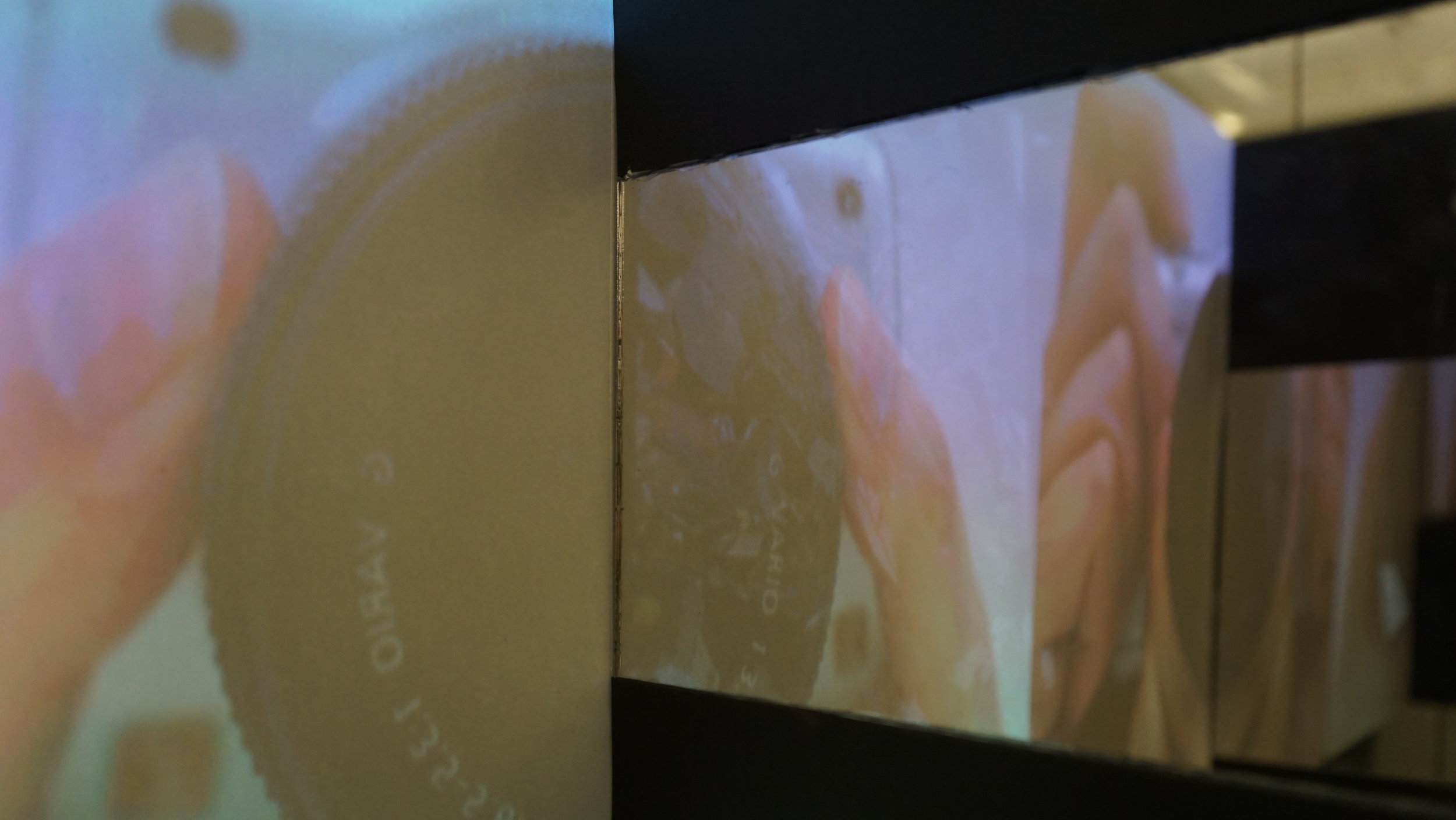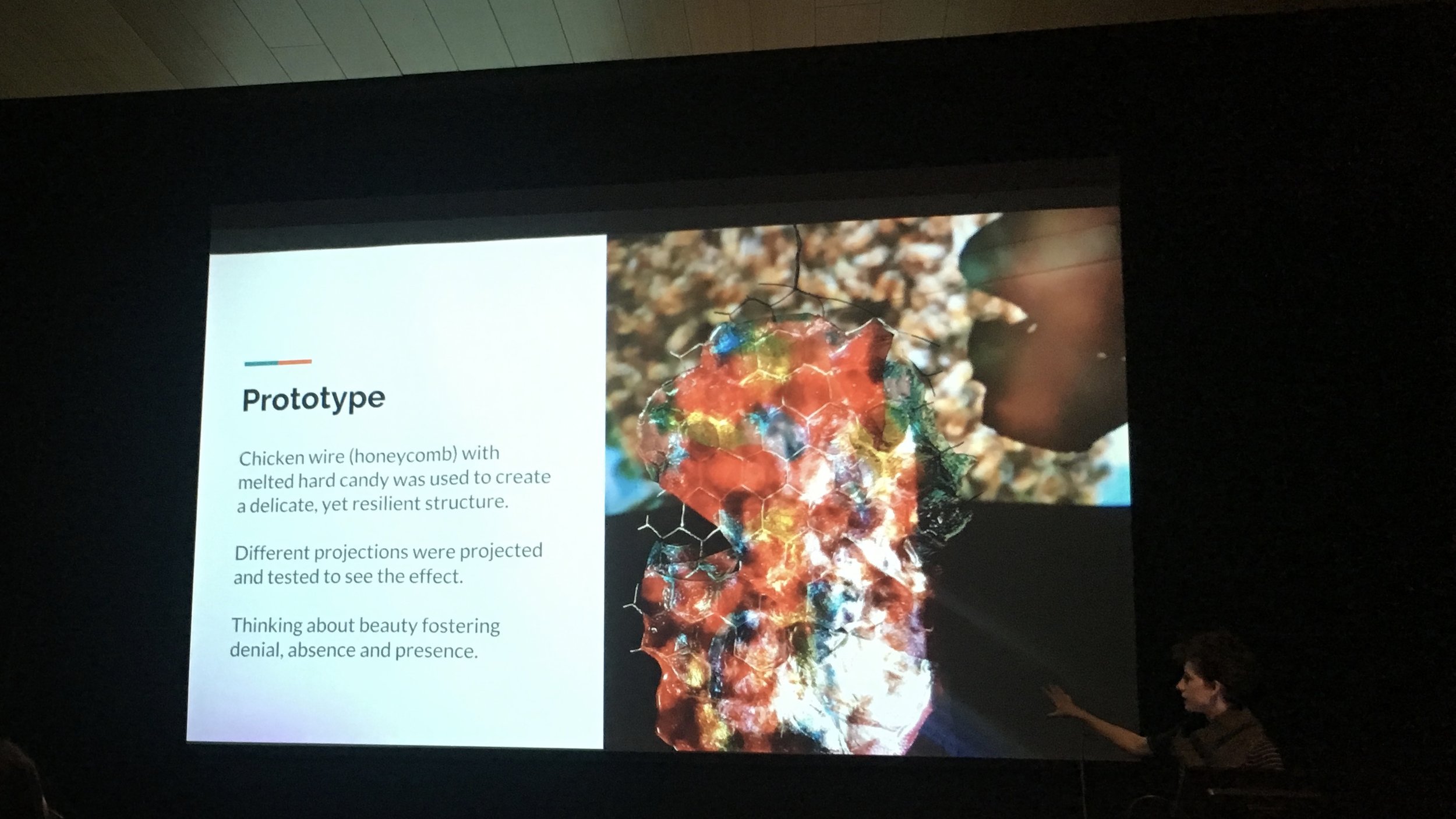Dystopian Reality
This project presents a speculative narrative in which humans live in a dystopian world as a result of constant over consumption of non-renewable resources. Humans began to simulate a utopia by psychologically “patching over” pieces of reality that are dissatisfying. In both figurative and literal ways, we are using man-made objects as the lens through which we observe the dystopian reality from this world of pretense. In the form of an interactive installation, this project questions our perception of resource consumption and climate change.
This project is done in collaboration with classmate Julia Zhang, MFADT '18.
This project discusses the issues that we face today as we become increasingly aware
of our relationship with the resources we consume. We are portraying a speculative disrupted world under the disguise of an ideal appearance. Using back-lit projection and see-through two way mirrors, we are creating a installation that simulates the ability to look beyond the appearance of a utopian world. This project examines mass-produced daily objects and the hidden aftermath of their consumption, and employs their imagery as portals that unknowingly connects us with the other version of the reality. Combined with a narrative that is closely related to our daily rituals, we hope to shine light on the issues of the over-consumption and disposal of resources from a unique perspective.
Ideation
Corso Umberto, Amatrice. GIF from Bored Panda
We are specifically interested in seeing a comparison between the organized and disorganized states of one place. As a reference, journalist photography often depicts these before and after states of a place that is affected by natural disasters. We began our search of these before and after scenes by looking at cities which suffered an earthquake, and examining how man-made structures could reflect the state of nature.
As we proceed with our prototyping, we are inspired by feedback that encourages us to think about not only these disastrous situations, but scenes that are embedded within our daily rituals that allows us to connect emotionally.
Prototyping
Our technical production focuses on achieving two main objectives. Firstly, how can we create a clear, visually prominent video display that does not get interrupted as people approach it? In addition, how can we dynamically control the content of that display? In order to do so, we chose to construct a space that allows for back-lit projection on vellum, and used MadMapper to make sure that the imagery is perfectly mapped onto the surface. To allow for dynamic content, we have connected our video display to an ultrasonic sensor. We then mapped the distance between the audience and the display to the brightness of the videos. This creates and effect of a stronger contrast between the videos in front of and behind the mirrors.
Tech Prototype I: We used this first prototype to test the visual effect of see-through two way mirrors, and the interaction this effect inspires. We were able to create an overlay image effect that appropriately conveys our concept of the two juxtaposed worlds.
Tech Prototype III: For a smooth dimming effect, we decided to create a back-lit vellum surface to serve as our screen. Using processing to control the brightness of the videos, we were able to more seamlessly blend the videos and create an overlay effect, as well as use dynamic video content.
Tech Prototype II: We used ultrasonic sensor to detect the distance between the user and the mirror. When people approach the two-way mirrors, the LED stripe light in the boxes will light up and the hidden images will show up.
Content iterations
In the next iteration of our design, we are positioning mass-consumed man-made objects as the lens through which we observe the dystopian reality from this world of pretense. These objects are lens in both figurative and literal ways. We often unconsciously look into these objects, and they serve as portals that unknowingly connects us with the other version of the reality. Pairing mass-consumed objects with the unseen ecological disruption they cause, we created primary and secondary visuals for the installation.
In February 2018, Parsons welcomed the Aalto University class and hosted a weekend of workshop and demos. We discussed the development process and reoccurring themes among both collection of projects. Shown below is a joint presentation at Parsons. In March, the Parsons group travelled to Helsinki for a 4-day exhibition.




















